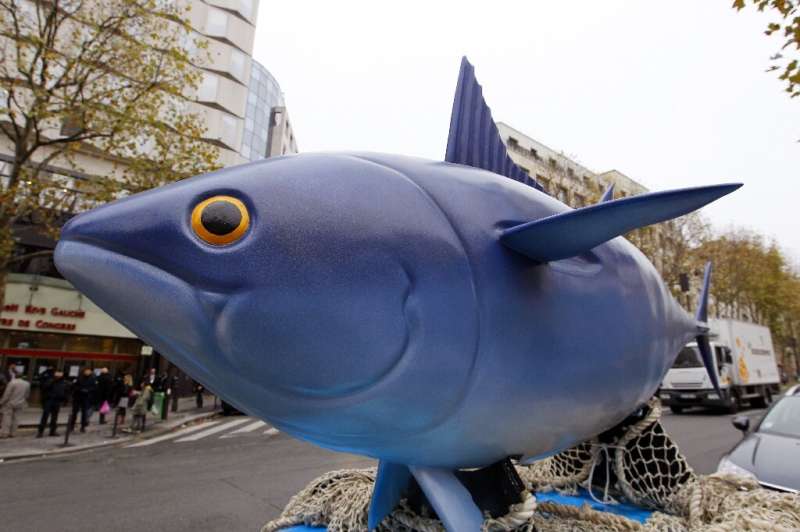Bigeye tuna get 'modest' reprieve as fishing nations cut quotas

The world's major fishing nations have agreed "modest" quota cuts for the under-pressure Atlantic Bigeye tuna but critics say more should be done to protect an important food resource.
Scientists warn that unless the catch is reduced, stocks of Thunnus obesus—especially prized for sashimi in Japan and canned worldwide—could collapse within years.
A scientific report prepared for last year's failed meeting of the International Commission for the Conservation of Atlantic Tunas (ICCAT) showed numbers had plummeted to less than 20 percent of historic levels.
This is only about half what is needed to support a "maximum sustainable yield"—the largest catch that can be taken without compromising the long-term stability of a species.
Going into the meeting in Majorca, Spain, ICCAT had a headline quota of 65,000 tonnes, allocated to the seven groups, including Japan and the EU, with the largest catch.
When smaller members were included, this rose to around 77,000 tonnes, pushing the Bigeye further into the danger zone, according to NGOs.
ICCAT agreed this time around to cut this main quota to 62,500 tonnes in 2020 and 61,500 tonnes in 2021.
'Fairly modest' reduction
The reduction "is fairly modest," said Daniel Gaertner of the Institute of Research for Development in Marseille, France.
"It's good news but we are disappointed that overfishing will continue," added fisheries expert Grantly Galland with the Pew Charitable Trusts.
Galland had told AFP before the Majorca meeting that "a quota of 60,000 tonnes would be too high" and suggested 50,000 tonnes instead.
Experts calculate that cutting the total catch to 50,000 tonnes would give Bigeye tuna a 70 percent chance of recovery by 2028.
Yvon Riva, head of the French frozen tuna association Orthongel, said the changes were "severe, they are going to hurt us but they are going in the right direction."
Under the new system, parties with catches above 10,000 tonnes will have to reduce them by 21 percent in 2020.
Those on 3,500-10,000 tonnes must cut their catch next year by 17 percent, with those on 1,000-3,500 tonnes dropping 10 percent.
Those below 1,000 tonnes will be allowed to maintain recent catches but these will be reviewed.
ICCAT also decided to limit the use of floating rafts which provide cover and so attract tuna, especially juvenile fish, so that they are more easily caught.
From the current 500 rafts, each boat will only be allowed to use 350 next year and 300 in 2021.
In addition, there will be a moritorium on the use of such rafts in the Atlantic for two months in 2020 and three months in 2021.
For albacore tuna, also seriously over-fished, ICCAT members accepted a quota of 110,000 tonnes from 2020.
The meeting also looked at the future of the shortfin mako, also known as the blue pointer or bonito shark, and which is among the most at risk.
It is already protected under international trade by the wild fauna and flora CITES convention but smaller ICCAT members wanting a complete ban in the North Atlantic could not reconcile their position with EU and US counter proposals.
© 2019 AFP




















